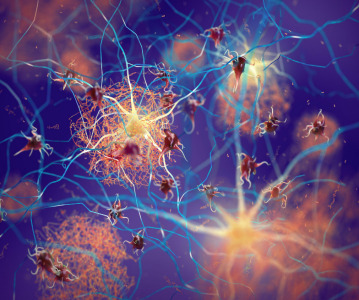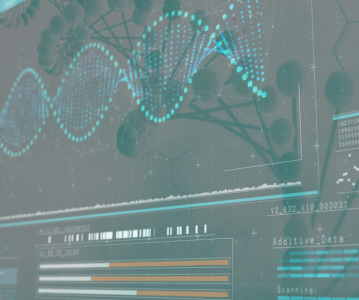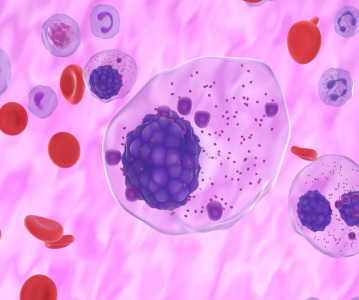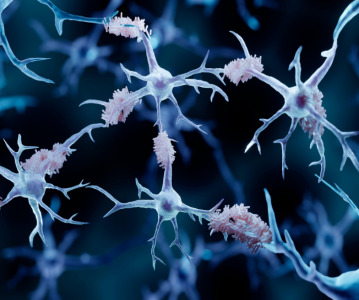CeMM and Haplogen Make Available the World’s Largest Collection of Engineered Human Cell Lines for Biomedical Discovery

Haplogen, a biotechnology company developing antiviral therapies, and CeMM, the Center for Molecular Medicine of the Austrian Academy of Sciences, are making available their large collection of human cell lines that are deficient for single genes, which they have been building during the past 3 years as part of a public–private partnership.
The partnership, through Haplogen, will distribute requested cell lines to the research community. The collection and the technological advances that enabled its development were published in Nature Methods* on 25 August. It currently includes cell line clones covering 3000 different human genes, which represents about one third of all the genes that are active in these cells. The collection will continue to expand until all the genes have been targeted.
Although cell lines of human origin have been around for many years, they are all vastly different from each other, making them very difficult to control when performing genetic experiments, thereby limiting their use particularly for drug discovery efforts and discovering the function of genes. This new collection circumvents this problem by providing individual gene mutations in an otherwise identical genetic background.
Prof. Giulio Superti-Furga, Director of the CeMM who initiated this project commented: “This collection will fuel research in molecular medicine where the vast majority of human genes remain poorly understood and await functional characterization. Obtaining human cells where an individual gene is inactivated has so far been difficult and very tedious. With this largest human cell line collection available to date we expect to drive countless scientific discoveries in the research community.”
“The creation of those precise mutants has become possible by the use of a haploid cell line. Destroying a single gene in haploid cells will immediately cause a detectable change — in contrast to our natural cells that always bear two copies of each gene” explains Thijn Brummelkamp, the inventor of the haploid genetics technology in human cells that was used to create this collection, and founder of Haplogen.
Georg Casari, CEO of Haplogen: “In this publication we show that these cell lines really behave as if only the gene of choice is no longer present. We have taken great care to document that the gene products are gone and that those clones have new properties as compared to the parental, unmodified cell line. We are excited to provide and distribute this resource to researchers worldwide and contribute to the advancement of medical research. Our goal is to eventually obtain mutant cell lines for every human gene.” He continued: "At Haplogen we use this collection as an indispensable component in our research and development of antiviral medications for treating a wide range of harmful infectious diseases. This partnership of academic research at CeMM and private investment by the company has made it possible to finance this collection and build a resource to the benefit beyond the two institutions for scientists all over the world.”
The cell line collection has received financial support also from ZIT (Technology agency of the City of Vienna) and can be explored at http://clones.haplogen.org
*Publication:
Bürckstümmer T, Banning C, Hainzl P, Schobesberger R, Kerzendorfer C, Pauler FM, Chen D, Them N, Schischlik F, Rebsamen M, Smida M, Fece de la Cruz F, Lapao A, Liszt M, Eizinger B, Guenzl PM, Blomen VA, Konopka T, Gapp B, Parapatics K, Maier B, Stöckl J, Fischl W, Salic S, Taba R, Knapp S , Bennett KL, Bock C, Colinge J, Kralovic R, Ammerer G, Casari G, Brummelkamp TR, Superti-Furga G & SM Nijman. Areversible gene trap collection empowers haploid genetics in human cells. Nat Methods. 2013 Aug 25. doi: doi:10.1038/nmeth.2609. [Epub ahead of print]
Related News
-
News BioNTech to begin mRNA vaccine manufacturing in Rwanda by 2025
German biotechnology company BioNTech has stated their intentions to begin production at their mRNA vaccine factory in Rwanda by 2025, which will mark the first foreign mRNA vaccine manufacturing site on the continent of Africa. -
News Identifying Alzheimer’s Disease biomarker proteins with whole blood tests
A University of Manchester spin-out pharmaceutical company, PharmaKure, has reported successful study results for the quantification of Alzheimer’s Disease biomarker proteins with a whole blood test. -
News Bill & Melinda Gates Foundation to boost mRNA vaccine initiatives in Africa with USD $40m
To address vaccine inequality and accessibility issues, the Bill & Melinda Gates Foundation aims to deliver USD $40m to various biotech companies and vaccine manufacturers in support of mRNA vaccine development. -
News CPHI Podcast Series: Exploring neurological frontiers in Alzheimer's and beyond
The next episode of the CPHI Podcast Series delves into the science and background behind some recent developments in the field of Alzheimer's disease and neurological disorders. -
News Is patient centricity the future of pharmaceutical manufacturing?
In this interview with Sandra Sánchez y Oldenhage, President of PharmAdvice, she speaks to the importance of considering patients in the manufacturing stages of the pharmaceutical supply chain, and how it can redefine healthcare. -
News CPHI Podcast Series: How to leverage AI for Drug Discovery
Artificial intelligence is the topic of debate in the latest episode from the CPHI Podcast Series, where Digital Editor Lucy Chard speaks with Bill Whitford of DPS Group about the integration of AI in healthcare. -
News Pfizer forges ahead with blood cancer therapy after approval from FDA
Pfizer gains accelerated approval from the US FDA for their new bispecific antibody therapy for multiple myeloma, set to address an unmet need for patients. -
News Alzheimer's drug donanemab deemed effective in landmark clinical trial
Results from the TRAILBLAZER-ALZ 2 Randomised Clinical Trial into the use of donanemab to treat early symptoms of Alzheimer’s disease have been analysed.
Position your company at the heart of the global Pharma industry with a CPHI Online membership
-
Your products and solutions visible to thousands of visitors within the largest Pharma marketplace
-
Generate high-quality, engaged leads for your business, all year round
-
Promote your business as the industry’s thought-leader by hosting your reports, brochures and videos within your profile
-
Your company’s profile boosted at all participating CPHI events
-
An easy-to-use platform with a detailed dashboard showing your leads and performance







